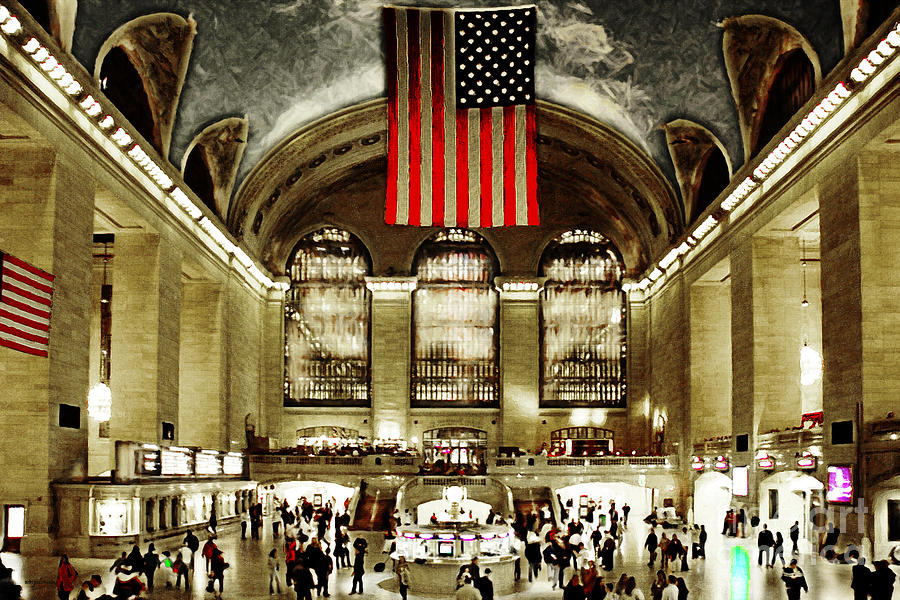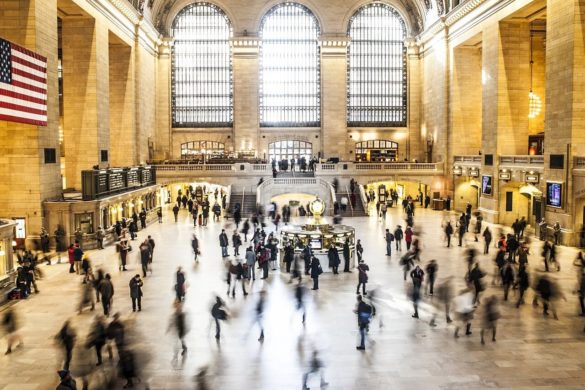This time around, we shall cover Gleis 61 New Yorker Grand Central Terminal. Obviously, there is a great deal of information on Atlantic Avenue Tunnel on the Internet. The rapid rise of social media facilitates our ability to acquire knowledge.
information about Baldwin Street is also related to Abandoned Subway Station New York and New York Pneumatic Transit. As for further searchable items pertaining to Grand Central Terminal, they will likewise have anything to do with Manhattan Main Line.

8 Things About Gleis 61 New Yorker Grand Central Terminal | New York Pneumatic Transit
- In 1974, Donald Trump bought the Commodore Hotel to the east of the terminal for $10 million and then worked out a deal with Jay Pritzker to transform it into one of the first Grand Hyatt hotels. Trump negotiated various tax breaks and in the process agreed to renovate the exterior of the terminal. The complementary masonry from the Commodore was covered with a mirror-glass “slipcover” façade - the masonry still exists underneath. In the same deal, Trump optioned Penn Central’s rail yards on the Hudson River between 59th and 72nd Streets that would eventually become Trump Place—the biggest private development in New York City. - Source: Internet
- Although the Pan Am Building bought time for the terminal, the New York Central Railroad continued its precipitous decline. In 1968, facing bankruptcy, it merged with the Pennsylvania Railroad to form the Penn Central Railroad. The Pennsylvania Railroad was in its own precipitous decline and in 1964 had demolished the ornate Pennsylvania Station (despite pleas to preserve it) to make way for an office building and the new Madison Square Garden. - Source: Internet
- The station’s grand opening in 1913 was preceded by a decade of work on the original “Grand Central Depot” conceived by Cornelius Vanderbilt and opened in 1871. On the design team for the new structure was a cousin of the Vanderbilts, Whitney Warren, who had studied at the École des Beaux Arts in Paris. So it’s not surprising – given Warren’s training and the vast amount of money funnelled into the endeavour – that what resulted was a Beaux-Arts style building to rival all others in the world. But, with its glass catwalks in particular, the terminal is also considered by many to be a forerunner of modern architecture. - Source: Internet
- From 1922 to 1958 Grand Central Terminal was the home of the Grand Central Art Galleries, which were established by John Singer Sargent, Edmund Greacen, Walter Leighton Clark, and others.[13] The founders had sought a location in Manhattan that was central and easily accessible, and through the support of Alfred Holland Smith, president of the New York Central Railroad, the top of the terminal was made available. A 10-year lease[14] was signed, and the galleries, together with the railroad company, invested more than $100,000 in preparing the space.[15] The architect was William Adams Delano, best known for designing Yale Divinity School’s Sterling Quadrangle. - Source: Internet
- Grand Central Terminal (GCT) — sometimes called Grand Central Station or simply Grand Central — is a terminal station at 42nd Street and Park Avenue in Midtown Manhattan in New York City. Built by and named for the New York Central Railroad in the heyday of American long-distance passenger trains, it is the largest train station in the world by number of platforms:[3] 44, with 67 tracks along them. They are on two levels, both below ground, with 41 tracks on the upper level and 26 on the lower, though the total number of tracks along platforms and in rail yards exceeds 100. When the Long Island Rail Road’s new station, below the existing levels, opens (see East Side Access), Grand Central will offer a total of 75 tracks and 48 platforms. The terminal covers an area of 48 acres (19 ha). - Source: Internet
- New York City filed a suit to stop the construction. The resulting case, Penn Central Transportation Co. v. New York City (1978), was the first time that the Supreme Court ruled on a matter of historic preservation. The Court saved the terminal, holding that New York City’s Landmarks Preservation Act did not constitute a “taking” of Penn Central’s property under the Fifth Amendment and was a reasonable use of government land-use regulatory power. - Source: Internet
- A year after their opening the galleries established the Grand Central School of Art, which occupied 7,000 square feet (650 m2) on the seventh floor of the east wing of the terminal. The school was directed by Sargent and Daniel Chester French; its first year teachers included painters Jonas Lie and Nicolai Fechin; sculptor Chester Beach; illustrator Dean Cornwell; costume designer Helen Dryden; and muralist Ezra Winter.[17][18] - Source: Internet
- The Grand Central Art Galleries remained in the terminal until 1958, when they moved to the Biltmore Hotel. When the Biltmore was demolished in 1981 they relocated to 24 West 57th Street.[19] They ceased operations in 1994. - Source: Internet
 To begin started, here are some tips for finding information about Grand Central Terminal Facts:
- Research Manhattan Main Line-related information from credible sources. This includes libraries, websites, and even journalistic professionals.
- When researching New York Pneumatic Transit, it is vital to be aware of the numerous sorts of electronic media sources, such as Google and YouTube. Social media platforms, such as Facebook and Twitter, are also likely to contain information regarding Grand Central Terminal Facts.
To begin started, here are some tips for finding information about Grand Central Terminal Facts:
- Research Manhattan Main Line-related information from credible sources. This includes libraries, websites, and even journalistic professionals.
- When researching New York Pneumatic Transit, it is vital to be aware of the numerous sorts of electronic media sources, such as Google and YouTube. Social media platforms, such as Facebook and Twitter, are also likely to contain information regarding Grand Central Terminal Facts.Video | Gleis 61 New Yorker Grand Central Terminal
To obtain the most accurate information about Grand Central Madison, it is essential to investigate the credibility of each source by reading.
This article contains multiple Manhattan Main Line-related films from a variety of sources, which will expand your understanding about Grand Central Terminal’s best-kept secrets (photos). Internet is an excellent resource for getting information on a range of subjects.
## Here are some crucial points concerning Grand Central Madison:- Gleis 61 New Yorker Grand Central Terminal
- Grand Central Station
- Manhattan Main Line
- Grand Central Terminal Facts
- Abandoned Subway Station New York

With so many websites and forums giving Abandoned Subway Station New York-related information, it is not difficult to locate what you require.
This is a highly unconventional method for obtaining knowledge about Grand Central Madison, compared to what most people are accustomed to. It permits a more in-depth examination of the content and application of information regarding Manhattan Main Line.
 Methods for creating aesthetically pleasing and informative displays of Grand Central Terminal Facts information. They can be utilized in business and marketing environments to convey messages regarding Manhattan Main Line. Consequently, we additionally supply photographs regarding Baldwin Street.
Methods for creating aesthetically pleasing and informative displays of Grand Central Terminal Facts information. They can be utilized in business and marketing environments to convey messages regarding Manhattan Main Line. Consequently, we additionally supply photographs regarding Baldwin Street.
This article concludes by providing an overview of Manhattan Main Line. In addition, Grand Central Madison and Manhattan Main Line are discussed to compare your understanding of Atlantic Avenue Tunnel.